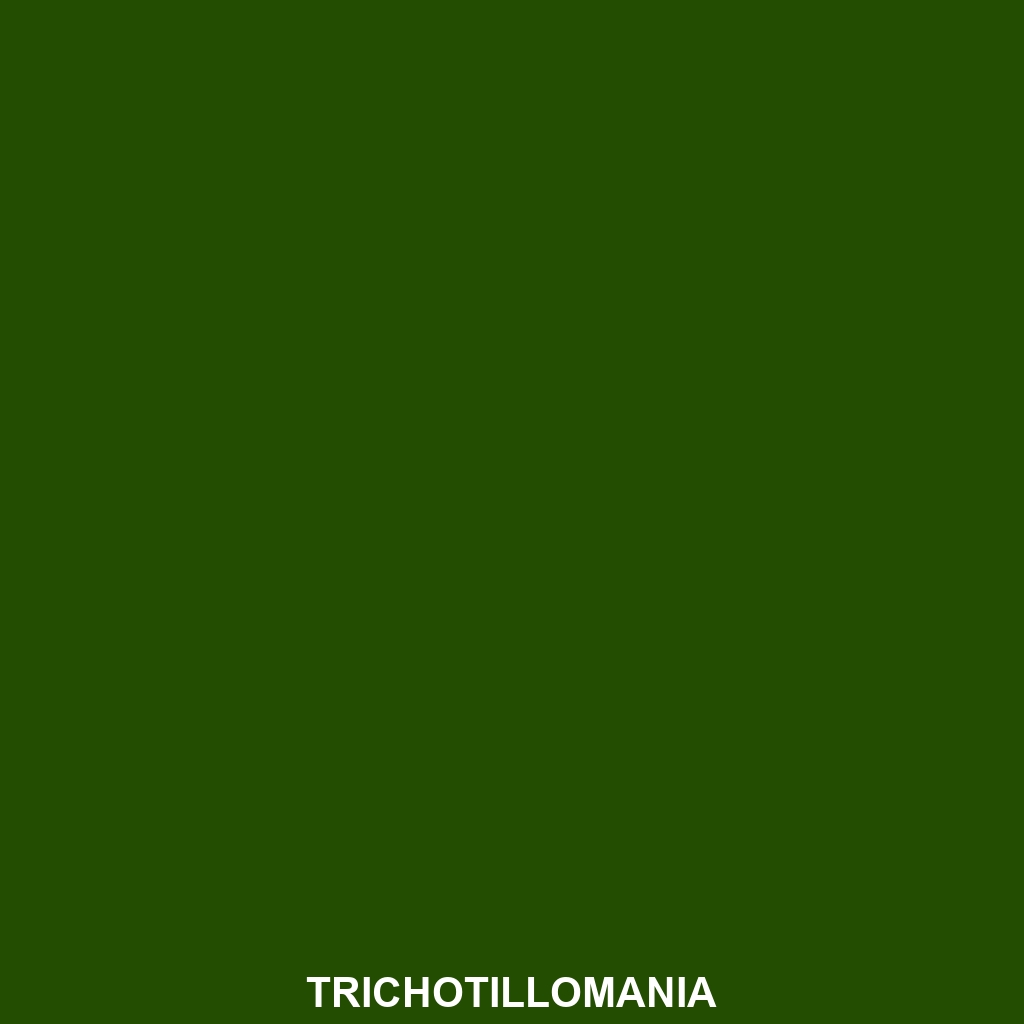Trichotillomania:
Definition and Description of Trichotillomania:
Trichotillomania, often referred to as ‘hair-pulling disorder,’ is a psychological condition characterized by the recurrent and uncontrollable urge to pull out one’s hair. This behavior can lead to noticeable hair loss and significant distress. It is classified as a mental health disorder in the Diagnostic and Statistical Manual of Mental Disorders (DSM-5) under Obsessive-Compulsive and Related Disorders. Patients might pull hair from various body parts, including the scalp, eyebrows, and eyelashes, and may engage in this behavior as a form of self-soothing or to cope with anxiety.
Causes of Trichotillomania:
The exact causes of trichotillomania are not well understood, but several contributing factors may play a role. These include:
- Genetic predispositions: A family history of similar disorders may increase susceptibility.
- Psychological factors: Conditions such as anxiety, depression, and obsessive-compulsive disorder (OCD) often co-occur.
- Environmental triggers: Stressful life events, trauma, or changes in routine may exacerbate symptoms.
Associated Symptoms of Trichotillomania:
In addition to hair pulling, individuals with trichotillomania may typically experience:
- Feelings of tension: A build-up of tension preceding hair-pulling.
- Relief or satisfaction: A sense of relief or gratification after pulling hair.
- Awareness: Individuals may be aware of their behavior but feel powerless to stop.
- Skin irritation: Areas of the scalp or skin may become sore or infected due to constant pulling.
Diagnosis of Trichotillomania:
Healthcare professionals typically diagnose trichotillomania through a comprehensive evaluation that includes:
- Clinical interviews: Discussion of symptoms, duration, and impact on daily life.
- Diagnostic criteria: Adherence to DSM-5 criteria helps to confirm the diagnosis.
- Exclusion of other conditions: Rule out other mental health disorders that may present similar symptoms.
Risk Factors for Trichotillomania:
Trichotillomania is most prevalent among:
- Age: It often begins in childhood or adolescence.
- Gender: More common in females than males.
- Family history: Increased likelihood if there is a family history of mental health disorders.
Complications of Trichotillomania:
Neglecting treatment for trichotillomania can lead to various complications, including:
- Skin infections: Resulting from pulling hair and subsequent skin irritation.
- Social and emotional issues: Erosion of self-esteem and withdrawal from social interactions.
- Permanent hair loss: In severe cases, hair may never regrow in affected areas.
Treatment Options for Trichotillomania:
Treatment for trichotillomania may involve:
- Cognitive-behavioral therapy (CBT): Focused on changing the thought patterns that lead to hair pulling.
- Medication: Selective serotonin reuptake inhibitors (SSRIs) may help alleviate symptoms.
- Support groups: Joining groups can provide community support and shared coping strategies.
When to See a Doctor for Trichotillomania:
If hair pulling leads to significant distress, interferes with daily functioning, or results in physical damage, seeking professional help is crucial. Signs that indicate it’s time to see a doctor include:
- Intensive urges to pull hair.
- Feelings of helplessness regarding the behavior.
- Visible damage to skin or hair follicles.
Prevention of Trichotillomania:
While preventing trichotillomania may not always be feasible, strategies can help minimize the risk:
- Stress management: Techniques such as mindfulness and meditation can reduce overall anxiety.
- Healthy coping mechanisms: Finding alternative ways to cope with stress, such as exercise or hobbies.
- Avoid triggers: Identifying and avoiding situations that provoke the urge to pull can help manage symptoms.
Statistics and Prevalence of Trichotillomania:
According to research, trichotillomania affects approximately 1-2% of the population, with onset typically occurring during adolescence. It is estimated that 10% of individuals will seek treatment in their lifetime.
Personal Stories or Case Studies about Trichotillomania:
Personal accounts of individuals living with trichotillomania often reveal the emotional and psychological toll of the disorder. Many report feelings of shame and isolation, but with treatment, they have found ways to manage their condition effectively. Expert opinions suggest that early intervention can lead to better outcomes for individuals struggling with this disorder.
Myths and Misconceptions about Trichotillomania:
Several misconceptions can hinder understanding and acceptance of trichotillomania:
- Myth: It is just a bad habit. Truth: Trichotillomania is a recognized mental health disorder.
- Myth: People can easily stop pulling their hair if they want to. Truth: It often requires professional treatment to overcome.
- Myth: It only affects children. Truth: It can persist into adulthood if untreated.
Support and Resources for Trichotillomania:
For those affected by trichotillomania, support groups and resources can provide essential help. For more information, visit this support page for additional resources and help.
Conclusion about Trichotillomania:
Understanding trichotillomania is critical for those affected and their loved ones. By recognizing the symptoms, seeking appropriate treatment, and accessing support resources, individuals can manage this disorder effectively. If you or someone you know is struggling, do not hesitate to seek help.
